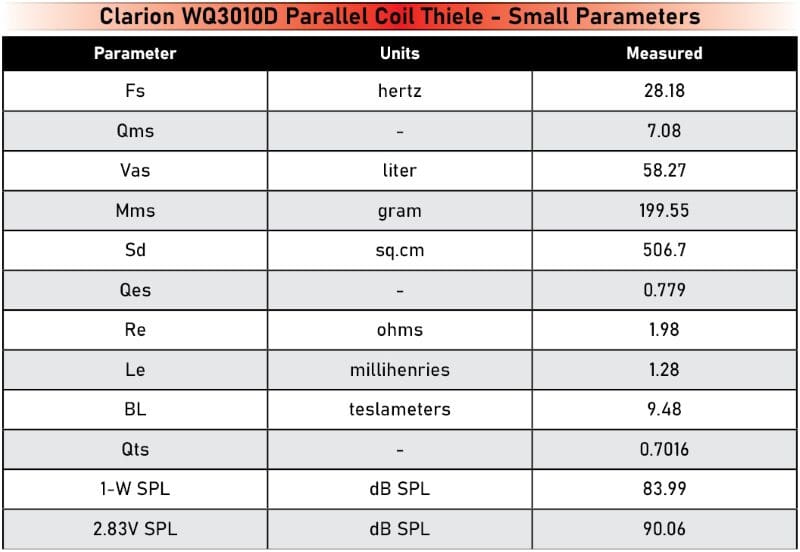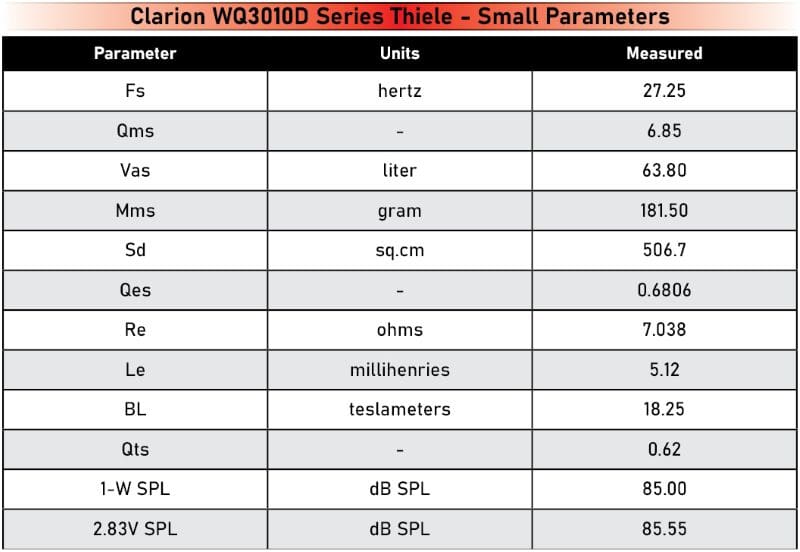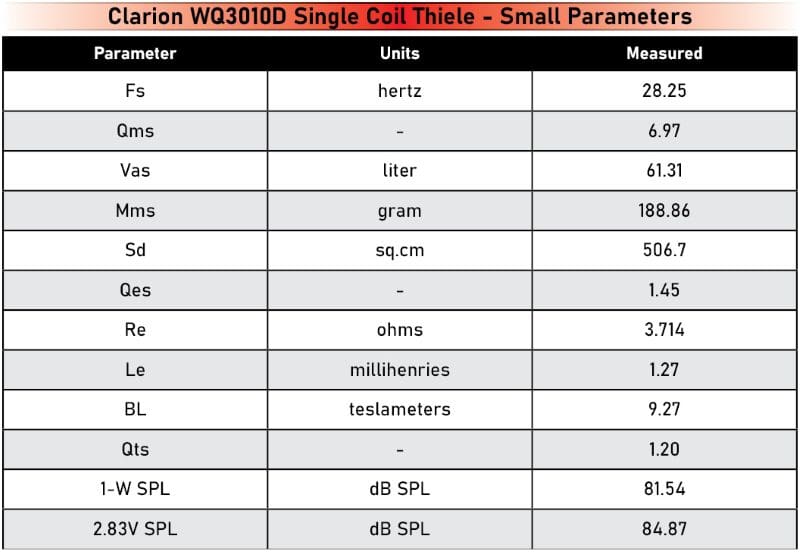Dual voice coil subwoofers exist to provide installers with three options to connect the driver to an amplifier. The coils can be wired in series or parallel to double or half the impedance of a single coil. Alternatively, each coil can be connected to separate amplifier channels to add power from non-bridgeable configurations. A question that often arises is, what happens if you only use one voice coil on a DVC subwoofer? Let’s take a look?
Dual Voice Coil Subwoofer Configurations
As a continuation of our article about series and parallel wiring for multiple subwoofers in a single enclosure, I made some measurements of those drivers with only one of the two coils on each subwoofer connected to the amplifier. I made the measurements with the coils in series and in parallel to see if the increased inductance (when wired in series) had any effect on the frequency response. Unfortunately, you’ll have to wait until the end of the article to see the results. I know, I’m a tease!
Dual voice coil subwoofers exist to provide installation flexibility. For this article, we’ll talk about a pair of subwoofers that have two 4-ohm voice coils. If the coils are wired in parallel, the net impedance of the subwoofer will be nominally 2 ohms. If the coils are wired in series, the nominal impedance will be 8 ohms. If you have questions about subwoofer wiring, read our article about ohms and loads.
The objective of being able to wire the coils of a DVC subwoofer differently is to allow your installer the flexibility to optimize the power output capabilities of your subwoofer amplifier. Many subwoofer amplifiers want to see relatively low impedances like 1 or 2 ohms. If we had a single, dual 4-ohm voice coil subwoofer, we’d wire the coils in parallel to an amplifier that made maximum power into a 2-ohm load.
Things go sideways when someone has a dual 4-ohm voice coil subwoofer and a two-channel amplifier with a minimum bridged impedance of 4 ohms. The subwoofer wiring options are 2 or 8 ohms. One will overload the amp, and the other will result in the amplifier making less power than it could. Many amateurs resort to using only one of the voice coils. So, what happens when they do that?
Thiele/Small Parameters and Subwoofer Performance
The frequency response of any low-frequency speaker can be predicted using computer modeling software that analyzes a set of electro-mechanical measurements called the Thiele/Small parameters. More specifically, these simulations evaluate the speaker’s output based on how it interacts with different enclosures. The charts and graphs produced by simulation software do NOT consider distortion to predict the quality of the speaker’s output. When a subwoofer (or midbass or midrange speaker) is placed in an enclosure, the air inside that enclosure affects the low-frequency performance of the driver. Likewise, if a vent or passive radiator is added to the enclosure, that also alters the predicted frequency response.
When a technician or engineer measures the Thiele/Small parameters of a dual voice coil subwoofer, they should provide two sets of parameters: one with the coils in series and another with the coils in parallel. The predicted enclosure applications should be similar, as the mechanical compliance characteristics of the driver shouldn’t change significantly. On the other hand, if only one of the two voice coils is powered, things change more significantly.
I have a pair of older Clarion WQ3010D 12-inch subwoofers for this test. I’ve measured the Thiele/Small parameters of one of the speakers so we can compare the results of series and parallel wiring using just one voice coil.
Let’s start by looking at the series and parallel wiring measurements. While some values change a bit, overall, things are very similar. Of course, the inductance increases significantly with the coils in series, but that’s to be expected. Modeling these drivers in the same enclosure yields very similar results.
There are some significant differences in the Thiele/Small parameters when using a single voice coil. The driver’s total Q (Qts) has skyrocketed to 1.2 because the electrical Q is now 1.45 instead of just under 0.7. Why? Without getting deep into how Qes is calculated, the ratio of the voice coil resistant to the driver’s BL is “worse.”
We know from other articles that a high Qts value can negatively affect sound quality by prolonging ringing at the resonant frequency. This continued resonance does have the effect of increasing output around that frequency. In short, it should be louder but sound muddier. Let’s see what our simulation software predicts.
I loaded all the Thiele/Small measurements for the subwoofer into BassBox Pro, along with the dimensions of the enclosure. The graph below shows the predicted output with 500 watts of power.
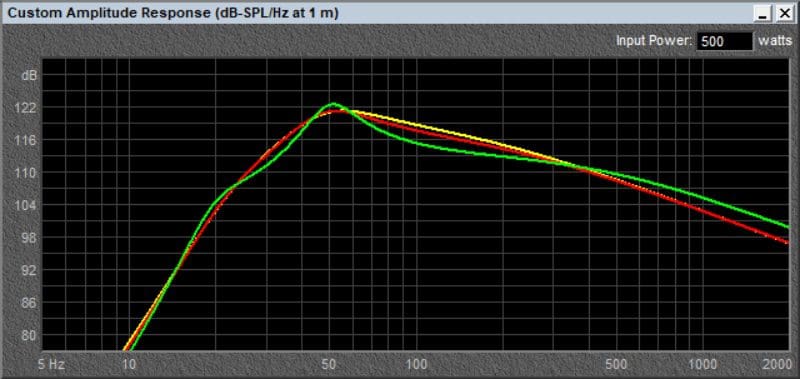
The simulation matches our prediction well. There is a larger bump in the predicted response at 50 hertz than when all four coils are used. This “one note” characterization would make the bass sound unnatural. Combined with the unwanted resonance, it’s a bad idea. Let’s look at the measurements.
Subwoofer Acoustic Measurements
Before we dive into the acoustic measurements, we need to discuss an issue. With all four coils of the subwoofers in use, the system presented a net impedance of about 4 ohms to the amplifier. Using only one coil of each subwoofer for the second measurement, the amplifier will see a 2-ohm load. As such, it will produce twice as much power and increase the output by 3 decibels. I’ve subtracted that 3 dB from the chart below to make the presentation about frequency response and not system design.
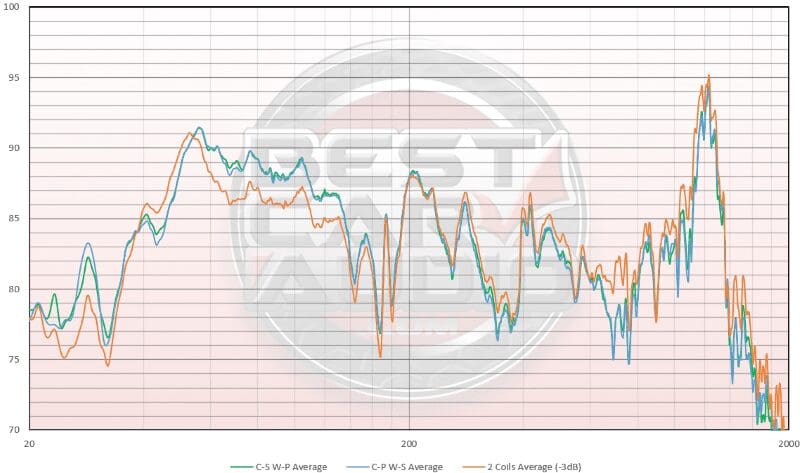
As predicted by the simulation software, the resonant peak is now much higher when only two coils are in use. We have a peak output of 90.92 dB at 53.65 hertz with one coil per sub and 91.34 dB at 57 hertz with all four coils driven. Where it matters in terms of system linearity, the single-coil configuration is quieter below 40 hertz and above 60 hertz. If your installer adjusted your system so that the bass output blended nicely with the midbass drivers in the vehicle, the peak at just under 54 hertz would be almost 3 dB louder than when all the coils are in use. That won’t sound good.
Why Can’t I Use One Coil on a DVC Subwoofer?
Aside from sounding terrible, using only one coil on your subwoofer raises concerns over power handling. Many say you cut your power handling in half if you don’t use both voice coils. I’ve put some time into the idea, and I’m not sure that’s 100 percent true. Thermal power handling is affected by the diameter and surface area of the voice coil winding. If we use one of the two coils, the size is the same as when we use both coils. The unused copper in the heat sink will absorb some of the thermal energy from the driven coil. So there could be less power handling, but not half as much. I’d hypothesize that it’s something like 80% to 90% of the full continuous specifications.
The real reason not to use only one of the two coils is that the subwoofer doesn’t behave the way the manufacturer intended. The parameters are no longer suitable for the application of a reasonably good-sounding car audio application. Can a dual voice coil car audio subwoofer be installed using only a single coil? Sure! There’s no “Car Audio Police Force” that will show up at your door to make you uninstall it. Will it sound good? Not even slightly. You’re better off purchasing the correct equipment from a local specialty mobile enhancement retailer to ensure that the output of your subwoofer system is fully optimized and sounds excellent.

